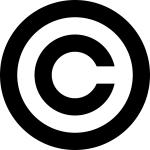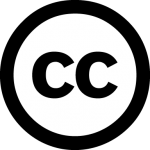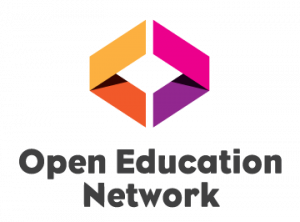Look Before You Write
4 Copyright and Open Licences
Before you begin writing, make sure you have a firm grasp of what copyright means and how applying an open-copyright licence — typically a Creative Commons licence — or designating your copyright to the public domain will affect your textbook.
According to the Merriam-Webster dictionary, copyright is
the exclusive, legal right to reproduce, publish, sell, or distribute the matter and form of something (such as a literary, musical, or artistic work)[1]

The laws that govern copyright vary from country to country. The term “copyright” (copy + right) was first recorded between 1725 and 1735.[2]
The copyright owner of a work, such as a textbook, is permitted to sell or distribute their work as they deem fit. This includes by assigning a licence or offering permissions to another party. For example, if an author decides to sell a book to a publisher, the contract might state that while the author retains copyright, the publisher has the right to print and sell the first copies of the book globally. In other words, the publisher has “First-time, non-exclusive, worldwide rights,” and for this right, the publisher pays the author. After the publisher has exercised this right, the author may resell their work.
Exceptions to copyright ownership: employment
Section 13(3) of Canada’s Copyright Act[3] explains that one’s employer owns copyright. Jean-Sébastien Dupont and Guillaume Lavoie Ste-Marie, from the law firm Smart & Biggar, Fetherstonhaugh, describe it this way: “if the work is created in the course of employment under a contract of service, and absent any agreement to the contrary, the employer will be the owner of the copyright (emphasis added) in the work created by the employee without the need for a formal assignment.”[4]
What can and can’t be copyrighted
There are several things that can’t be copyrighted. In the U.S., they include the following:
- Titles, names, slogans, and short phrases. (However, some of these might be protected with a trademark.)
- Facts, ideas, concepts, systems, and methods of operation. (Yet, copyright might protect how these items are expressed such as in a writing or illustration.)[5]
For more information on this topic, see the Creative Commons blog by Timothy Vollmer, “The public domain and 5 things not covered by copyright”.
In Canada, copyright provides protection for “literary, artistic, dramatic or musical works (including computer programs) and other subject-matter known as performer’s performances, sound recordings and communication signals.”[6]
Note: The terms copyright and intellectual property are not synonymous. As stated above, copyright are permissions that apply to specific creative works whereas intellectual property is a broad term that refers to
(a) form of creative effort that can be protected through a trademark, patent, copyright, industrial design or integrated circuit topography.[7]
Intellectual property rights are the permissions that cover these creative efforts, of which copyright is one.
Open-copyright licences

Creative Commons (CC) licences are open-copyright licences. (Also referred to as copyright licences.) Unlike more restrictive licences or permissions, these set of licences grant the following permissions and conditions. They give:
- the non-exclusive right
- to anyone
- anywhere on the globe
- to retain, reuse, redistribute, remix, or revise
- the author’s copyrighted work
- as many times as they like
- with no expiration date on these permissions.
The only condition to these permissions is that the user must attribute — give credit to — the copyright holder or the creator of the work. This is the minimal requirement of the most basic Creative Commons Attribution (also called CC BY) licence. Other versions of this open-copyright licence may include additional conditions. (See Appendix 1: Licences and Tools.)
The 5Rs of Openness
In his 2007 blog, David Wiley described the “Four Rs of Open Content”[8].

This was followed seven years later by the fifth R.[9] The elegant simplicity of these five statements has grabbed the attention of open educators everywhere and has become a standard and easy-to-remember method for describing how open licences work. The five Rs are:
- Retain: the right to make, own, and control copies of the content
- Reuse: the right to use the content in a wide range of ways, e.g., in a class, in a study group, on a website, in a video
- Revise: the right to adapt, adjust, modify, or alter the content itself, e.g., translate the content into another language
- Remix: the right to combine the original or revised content with other open content to create something new, e.g., incorporate the content into a mashup
- Redistribute: the right to share copies of the original content, your revisions, or your remixes with others, e.g., give a copy of the content to a friend
Avoid copyright infringement
It is the responsibility of the open textbook author to ensure that all material in an open textbook — whether it be newly created or modified, such as images, data, or multimedia — does not infringe or induce the infringement of any third-party copyrights.
For more information, read How to Avoid Copyright Infringement.
The Digital Copyright Slider is tool that can be used to establish if works first published in the U.S. are still protected by copyright (in the U.S.) or in the public domain.
For individual assistance and specific questions, consult with an intellectual property/copyright expert at your institution or elsewhere.
___________________________________________________________________________

___________________________________________________________________________
Attributions
David Wiley by Celine Morton is used under a CC BY 2.0 Licence.
- "copyright," Merriam-Webster, https://www.merriam-webster.com/dictionary/copyright (accessed August 1, 2017). ↵
- "copyright," Dictionary.com, http://www.dictionary.com/browse/copyright, (accessed August 1, 2017). ↵
- Canada, "13: Ownership of Copyright," Copyright Act, http://laws-lois.justice.gc.ca/eng/acts/C-42/page-4.html#h-7 (accessed December 13, 2017). ↵
- Jean-Sébastien Dupont and Guillaume Lavoie Ste-Marie, "Do you actually own the IP generated by your Canadian employees?" Smart & Biggar - Fetherstonhaugh, June 16, 2014, http://www.smart-biggar.ca/en/articles_detail.cfm?news_id=866 (accessed December 13, 2017). ↵
- "What Does Copyright Protect?" Copyright.gov, https://www.copyright.gov/help/faq/faq-protect.html (accessed November 16, 2017). ↵
- "A guide to copyright," Government of Canada, https://www.ic.gc.ca/eic/site/cipointernet-internetopic.nsf/eng/h_wr02281.html (accessed November 16, 2017). ↵
- "Glossary of Intellectual Property Terms," Government of Canada, https://www.ic.gc.ca/eic/site/cipointernet-internetopic.nsf/eng/wr00837.html#i (accessed November 16, 2017). ↵
- David Wiley, Weblog entry on "Open Education License Draft," iterating toward openness, posted August 8, 2007, https://opencontent.org/blog/archives/355 (accessed December 13, 2017). ↵
- David Wiley, Weblog entry on "The Access Compromise and the 5th R," iterating toward openness, posted March 5, 2014, https://opencontent.org/blog/archives/3221 (accessed December 13, 2017). ↵

